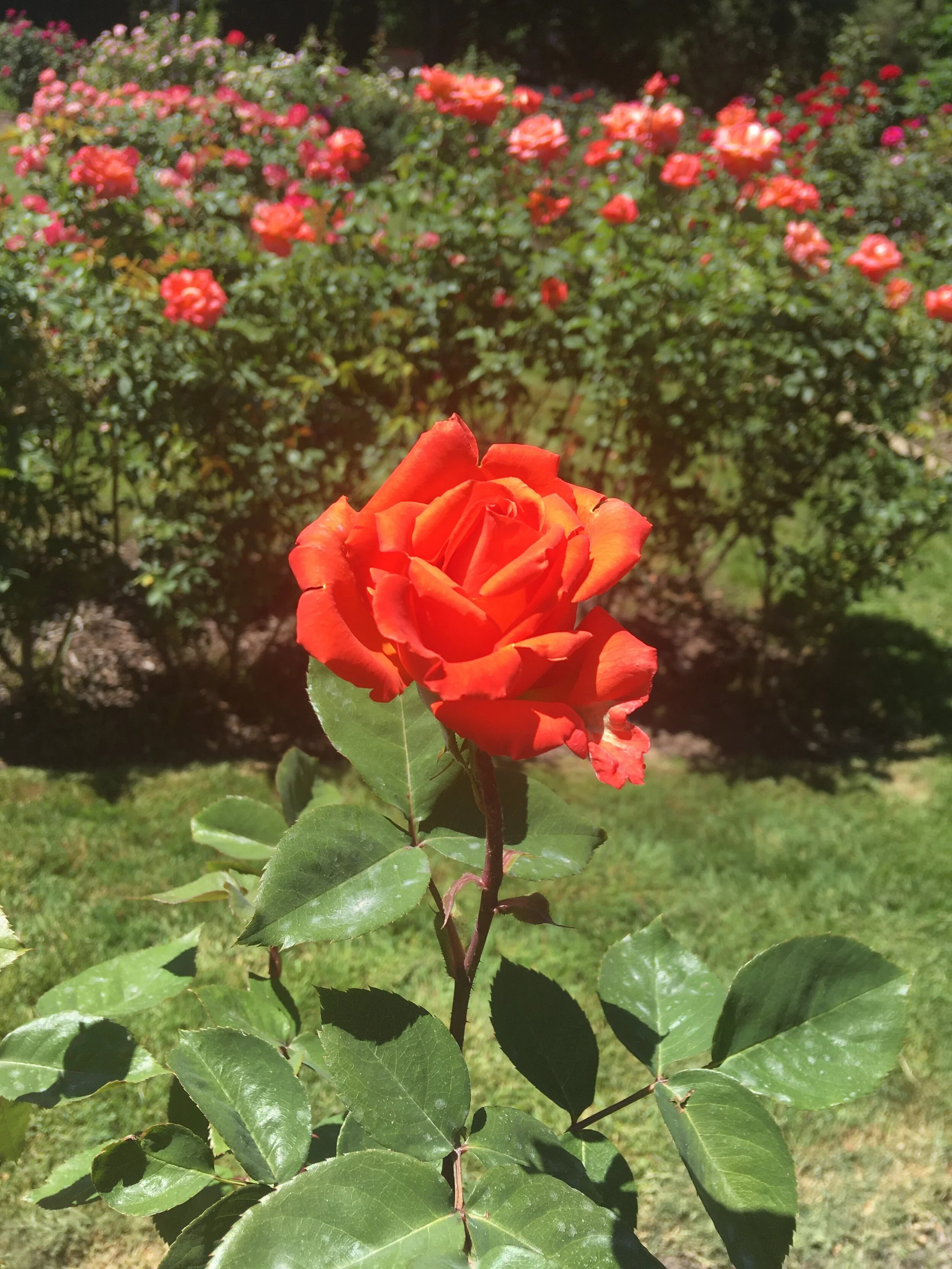Mid February to early March is the best time to prune roses. To achieve a high quality rose bush, you must remove all dead and diseased wood and reduce the remaining canes by at least a third.
The key to successful rose pruning is having the right tools for the job. Buying a quality pair of bypass, not anvil, pruners will be well worth the average $25 cost. A good pair of pruners pays for itself in reduced physical effort and nice, clean cuts.
Know Your Cultivar
Plants that flower repeatedly through the season can be pruned severely. However, if the plant blooms only once a year, such as Climbing Queen Elizabeth and Lady Banks Rose, the less pruning you do the better. These once-a-year bloomers flower on old wood, so pruning will decrease potential blooms come spring. Instead, return to these plants after the spring bloom and shorten their canes by a third.
Take A Trial Cut
As you prune, position the shears so that the cutting (sharp) blade is below the stationary blade. Make a few trial cuts and examine the wood on either side of the wood if you are unsure of the blade's position. The side of the cut hitting the stationary blade will show a small tear on the bark. The other side will be cleanly cut.
It is the inside appearance of the cane and not the outside appearance determines whether the cane is a keeper or not. Located in the center of the cane, the pith transports moisture and nutrients upward to the leaves. Removal of damaged canes will stimulate the production of new canes, which will allow the plant to be more efficient.
If the pith is brown or black, continue to cut down the cane until green or white pith is revealed. In some cases this may mean a drastic reduction of the cane. Occasionally, the pith will become darker with each successive cut, and the cane will have to be removed at the bud union using a small pruning saw.
Examine the configuration and number of the remaining canes. Remove any canes that cross through the center of the plant or grow inward. The goal is a configuration where canes grow up and out from the bud union leaving the center of the plant open for good air circulation. If there are more than five or six canes, remove the oldest, least productive canes until the strongest, youngest five or six remain.
Those after a garden display will usually prune higher (three feet) so that more bud eyes are left on the plant. More bud eyes mean more shoots that will ultimately result in more buds and more blooms. For fewer but larger blooms, prune much lower (about 18 inches).
No matter where you decide to cut, make the cut about a fourth of an inch above a bud eye that faces away from the center of the plant. Growth that emerges from such an eye will grow outward and help keep the center of the plant open.
Sealing Cuts
It is not crucial to seal pruning cuts, but a general purpose glue, like Elmer's, can be used. Avoid the school glue formulations that are water based. If using pruning paints, use caution as dripping them on an emerging bud eye could result in damage.

